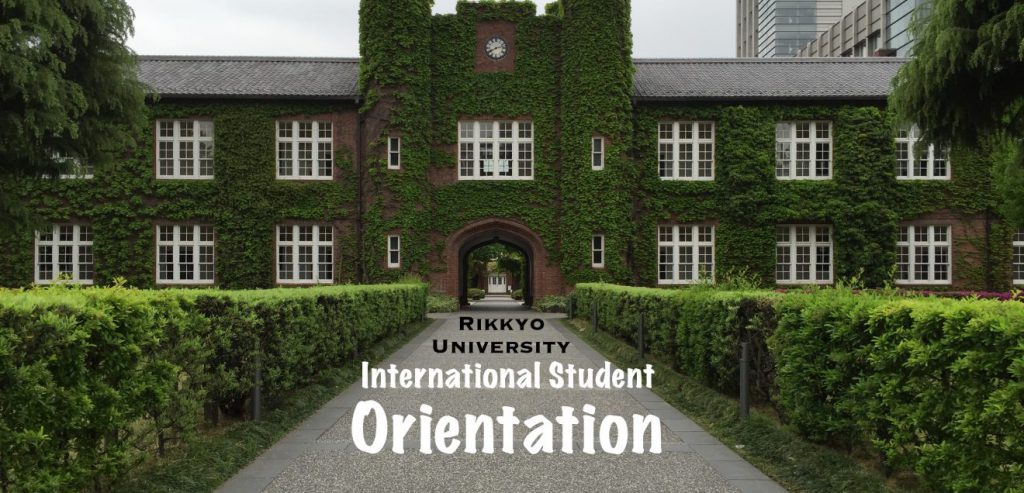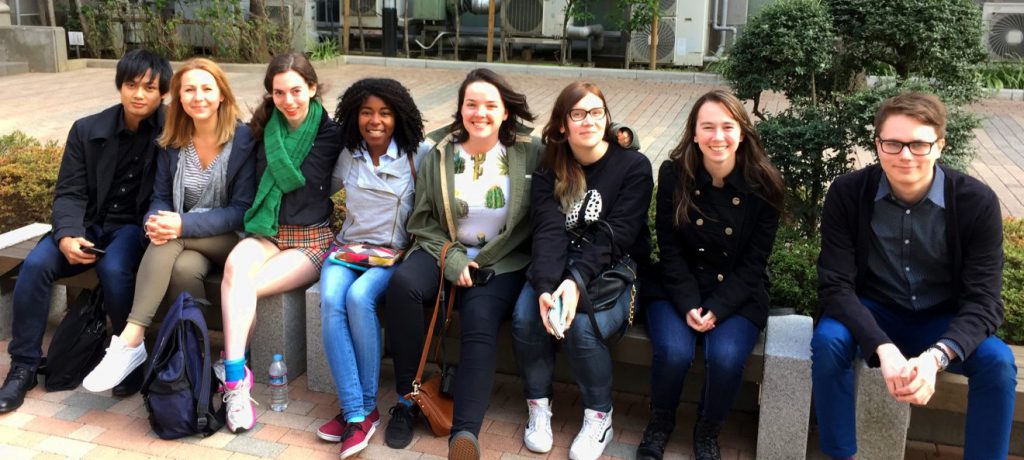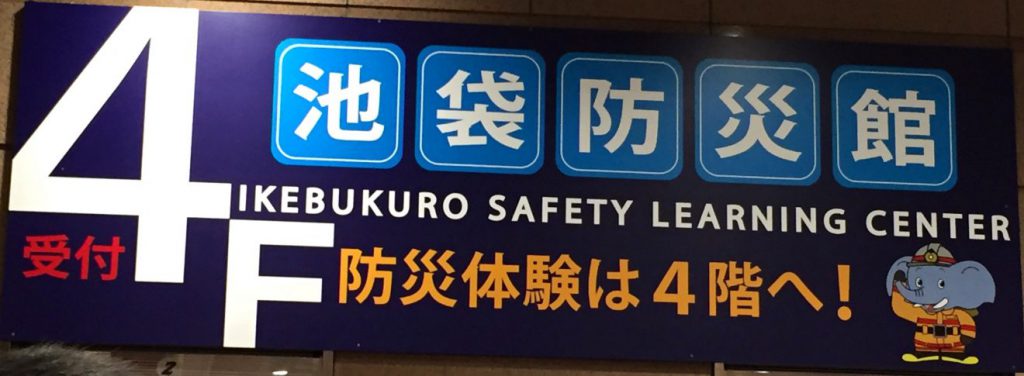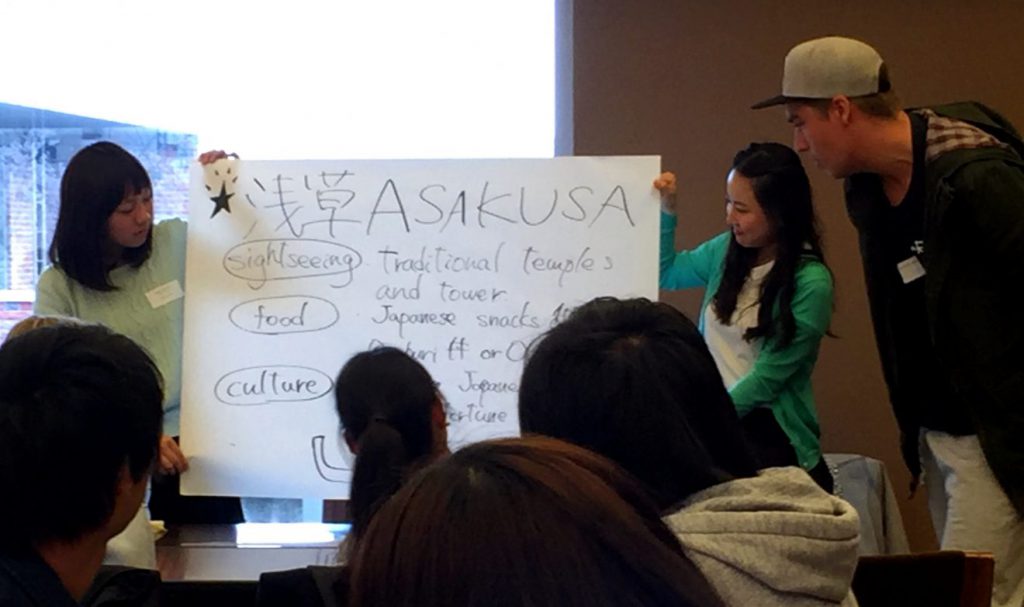Planning on studying abroad at Rikkyo University in the near future? Below, I talk about my experience going through orientation for new international students at Rikkyo University in Tokyo, Japan. Some of this may change in the future, but it should give you an idea of what to expect for your orientation. Overall, some of the information was common sense, but much of it proved very useful during my time in Japan.
This is a rather long post with very few pictures, so I apologize in advance for the large wall of text.

Welcome to Orientation at Rikkyo University
On the first day, I had to sign in, and it was open from 9:30 to 10:30. If you are living in one of the dorms, I would suggest leaving around 8:45 (assuming you are taking the semi-express or express trains), but you may want to leave earlier than that so you have time to find the building. Rikkyo’s campus isn’t very big, but you still don’t want to be late on your first day.
When signing in, I had to present my Certificate of Eligibility (the original, not a copy), my passport, and a 3cm x 4cm photo, so make sure not to forget those! If you don’t have a 3cm x 4cm photo (as an American, that’s an unusual size for photos), there are photo booths around that you can use to get your picture taken. Since I lived in the Rikkyo Asakadai Dorm, I also had to submit your dorm contract (although mine was already submitted by my home university), and I also had the option to enroll in Rikkyo’s health insurance plan (I opted not to since my home university enrolled me in traveler’s insurance).
Once I had signed in, I took my seat. It was assigned seating, and at my seat was a packet of papers that contained the student handbook, the course list, and other general information about Rikkyo. They also included registration forms, as some (not all) classes, required special registration requests. Other important paperwork included notices for leaving and returning to Japan (in case you decide to go somewhere during Golden Week or summer vacation).
Once orientation began, the presenters talked about the various papers in the packet, which was relatively self-explanatory. A representative from one of the international clubs (in Japan they’re called circles) also talked about the various activities they do on campus. When they were done, we were shown a rather cute video about how to prepare for an earthquake and what to do if an earthquake strikes.

Placement Test
If you intend on taking anything above J0 (the lowest level Japanese language class), you have to take a placement test. It contains three parts: an essay, a web test, and an interview. As somebody who was at about the beginner/intermediate Japanese level, I thought the test was incredibly hard.
The essay part of the test was conducted first. You are given genko yoshi (Japanese composition paper), but make sure to read the directions. You are told to write left to write, as opposed to top to down (which is how genko yoshi is traditionally used). There were two questions, one was a beginner level question, and the other was more advanced. The beginner question was along the lines of “give your opinion about studying a foreign language.” The advanced topic was along the lines of, “give your opinion on an issue in Japan.”
The web test was split into three parts: grammar, vocab, and kanji. From what I heard from other students, my “class” was the first group of students to have an online version of the test. The differences? They introduced a time limit for each question, and kanji was added (since kanji hadn’t been a testing point in the previous placement tests). The time limit was 30 seconds per question, which in my opinion is way too short, and you couldn’t go back to previous questions. How long the web test took depended on the person.
As I took the test, I quickly learned a couple of things. The more questions I got right, the harder the questions got. The sentences would contain more kanji and cover more difficult grammar points. If I started getting questions wrong, the questions would have more hiragana and even put spacing between the words to help you better read the sentences. Unfortunately, I had no idea how the scoring system works, so I don’t know whether it was better to leave a question blank or to just pick a random answer and hope you got it right.
The interview wasn’t hard, but it was a little awkward. My name is Japanese, which is an easy conversation starter since I don’t look Japanese. Everybody is always surprised when I introduce myself because they don’t expect to hear a Japanese name. After that basic question, they asked me about what kinds of Japanese food I liked and what were some of the places I wanted to go in Japan. I felt like I spoke relatively well, but I used basic words and basic grammar structure, and even stumbled a few times when I ran into something I wanted to say but didn’t quite know how to express it. Maybe the interview questions would have gotten harder, but my interview didn’t last real long.
I was hoping for the beginner/intermediate level classes, ideally J3 (see more info about the course levels), and that was what I got. Despite my frustrations about the test as a whole, it seemed to be able to accurately place me according to my skill level, so I guess I can’t complain.
Computer Orientation
For most seminars during orientation week, you had the option of attending the Japanese version or the English version. The Computer Orientation was unique in that it was conducted in both. One person spoke a sentence in Japanese, and then another person would say the same thing except in English. Together, they explained Rikkyo’s computer network, called V-Campus (standing for Virtual Campus). They explained to us where to go to login, how to setup our student accounts, and the different things our student accounts allowed us to do. There is also campus wide WiFi that we could connect to with our Rikkyo student username and password. Lastly, they talked about some of the resources that are available to us, such as computer labs and printers.
Library Orientation
I’m not sure about other countries, but in America there is a very well established library system. I’ve been familiar with the process of locating books and renting them since I was just a child. However, I have to believe that other countries must not have such a well established system, otherwise Rikkyo wouldn’t have spent an excruciatingly long time explaining how their library system worked. They covered everything from sitting down at a library computer, searching for the book you want, getting the book call number, and locating the book within the library. The only thing I learned from this orientation was that we can print in black and white for free up to 1,000 pages, and in color for free up to 100 pages.
Life Safety Learning Seminar
This part of orientation was actually conducted at a local fire station. The whole program reminded me of the Safety School young kids in America are often put through. A lot of the videos were a little childish, but not unbearable to watch, and a few other families with young children actually joined us as we went through the program.
The program started with a documentary video about the great earthquake and following tsunami that struck Japan in 2011. Once the video was over, we were taken to another room where we learned how to use a fire extinguisher. They even had a screen with a fire on it, and the fire wouldn’t go out until we sprayed the correct part of the screen with the fire extinguisher.
From there, we talked about evacuating a building if a fire has grown to big. They actually had a room filled with smoke that we had to crawl through and find our way out. The instructors of the program could watch us as we went through and gave us corrections over the loudspeaker, such as not staying close enough to the floor or not closing a door behind us.
Lastly, we went on an earthquake simulator. They had a platform with a dining room table and a few chairs, and surrounding it was a gigantic screen. While we sat at the dining room table, the screen displayed a kitchen setting. Once the alarm went off on the kitchen television, we all had to crawl under the little table and hold onto one of the legs. They gave us a simulation of a magnitude 9 earthquake (the same magnitude as the earthquake from 2011), and it was absolutely insane. Despite holding onto the table as hard as I could, I was still getting thrown around pretty badly. I can’t imagine having lived through the actual earthquake.

Dorm Orientation
Those who live in the dorm are required to attend the dorm orientation seminar. Personally, I thought it was strange that we were learning about the dorms on campus, instead of learning about the dorms at the dorms, but it is what it is. In the orientation, they just talked about general dorm rules, the meal plan offered, and what to do if you plan on staying elsewhere for the night.

RUI and JASSO Scholarship Orientation
Those who were notified in their welcome packet that they had received the RUI scholarship or had been nominated for the JASSO scholarship were required to attend this orientation seminar. Unfortunately, by the time of the seminar, the recipients of the JASSO scholarship hadn’t been determined yet, but the presenter stated that every student that had ever nominated had received the scholarship, so they were very confident that we would be receiving the JASSO scholarship. The orientation covered the differences between the scholarships and what we were required to do each month to maintain the scholarship.
You can get more information about the RUI and JASSO scholarships on Rikkyo’s website.
Buddy Orientation
When applying to Rikkyo University, I had the option of requesting a “buddy.” This would be another Rikkyo student or students who could assist me during my time in Japan. During orientation week, they had a set meeting for me to meet with my buddy group. The group consisted of two other international students and four Rikkyo students. We played some ice breaker games in order to get to know one another, and after they took us on a tour of campus.

Course Registration Orientation
Once you get the results of your placement test, they cover exactly what the results mean, and what you are able to do depending on what placement you got. For example, if you wished to take classes in Japanese, you had to be placed in J5 or higher. Unfortunately, the orientation was incredibly long, and probably a little unnecessary. They talked about each and every course that was taught in English and available for us to take. More importantly though, they covered how to register for courses and when the deadline was for us to make changes to our schedule.
Start Your Experience!
And that completes orientation week! There were other voluntary orientation seminars, including one about cell phones, SIM cards, and pocket WiFi. I chose not to attend many of those seminars, as I felt like I already knew everything I needed about those particular topics. If there is something you have a question on, you can always stop by the international office and ask. They were always real helpful whenever I had a question about anything.
Have any questions about orientation and what to expect? Let me know if the comments below!
Further Reading
- Rikkyo University Dorms: General Info
- Rikkyo University Dorms: Housing Contract and Dormitory Regulations
- You Will Never Be Japanese
- The Key To Beating Homesickness
Liked this article? Pin it to Pinterest!

